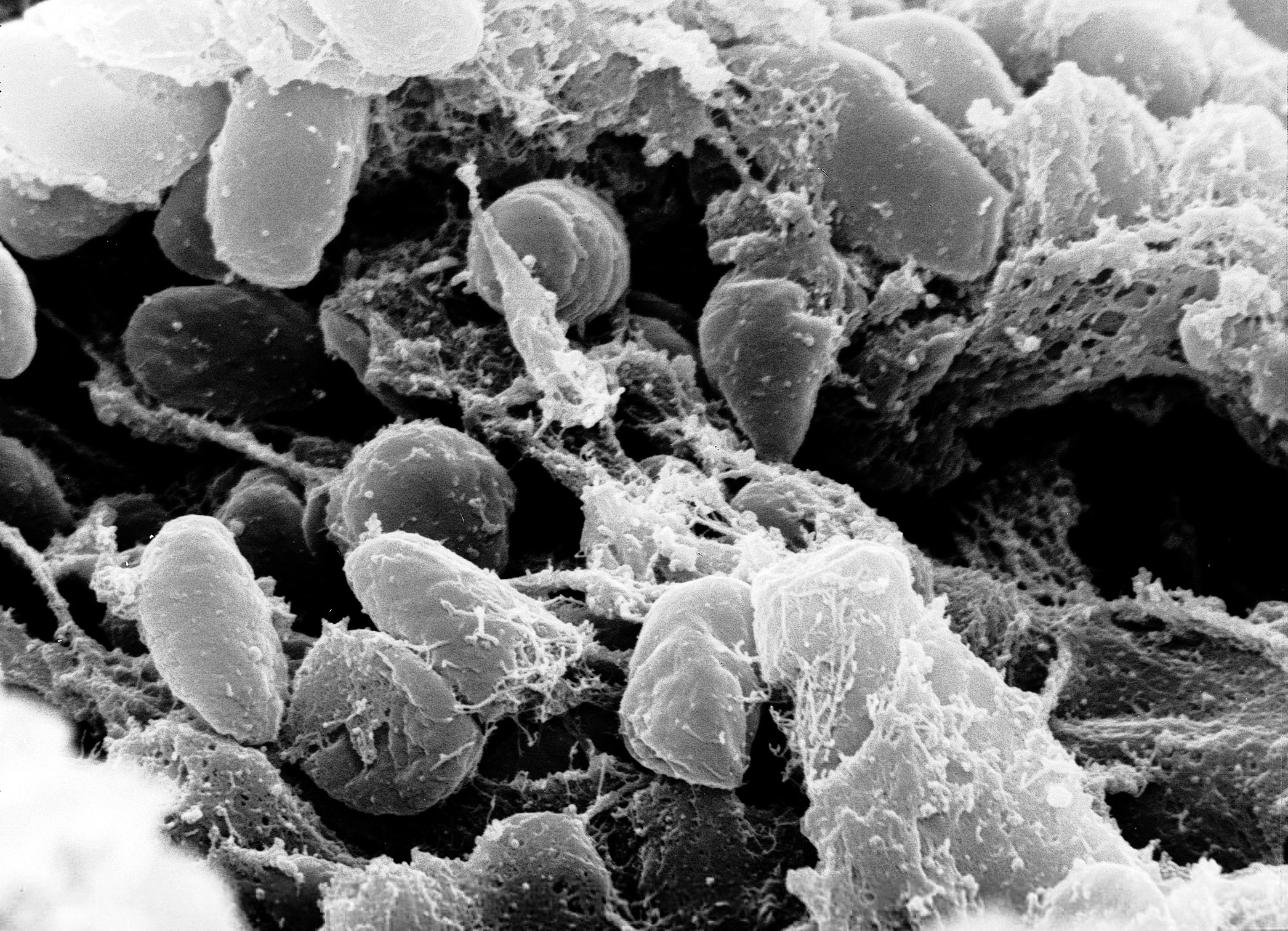|
Urban Plague
Urban plague is an infectious disease among rodent species that live in close association with humans in urban areas. It is caused by the bacterium ''Yersinia pestis'' which is the same bacterium that causes bubonic and pneumonic plague in humans. Plague was first introduced into the United States in 1900 by rat–infested steamships that had sailed from affected areas, mostly from Asia. Urban plague spread from urban rats to rural rodent species, especially among prairie dogs in the western United States. Vector reservoir Common vectors for urban plague are house mice, black rats, and Norway rats. Transmission Urban plague can be spread from animals to humans via flea bites and handling of infected fluids and tissues. Human to human infection occurs from droplets that contain plague bacteria which are produced when an infected person coughs. See also *Sylvatic plague *Epizootic References External links * Black Deathat BBC #REDIRECT BBC #REDIRECT BBC Here i going ... [...More Info...] [...Related Items...] OR: [Wikipedia] [Google] [Baidu] |
Yersinia Pestis
''Yersinia pestis'' (''Y. pestis''; formerly '' Pasteurella pestis'') is a gram-negative, non-motile, coccobacillus bacterium without spores that is related to both ''Yersinia pseudotuberculosis'' and ''Yersinia enterocolitica''. It is a facultative anaerobic organism that can infect humans via the Oriental rat flea (''Xenopsylla cheopis''). It causes the disease plague, which caused the first plague pandemic and the Black Death, the deadliest pandemic in recorded history. Plague takes three main forms: pneumonic, septicemic, and bubonic. ''Yersinia pestis'' is a parasite of its host, the rat flea, which is also a parasite of rats, hence ''Y. pestis'' is a hyperparasite. ''Y. pestis'' was discovered in 1894 by Alexandre Yersin, a Swiss/French physician and bacteriologist from the Pasteur Institute, during an epidemic of the plague in Hong Kong. Yersin was a member of the Pasteur school of thought. Kitasato Shibasaburō, a Japanese bacteriologist who practised Koch's me ... [...More Info...] [...Related Items...] OR: [Wikipedia] [Google] [Baidu] |
Sylvatic Plague
Sylvatic plague is an infectious bacterial disease caused by the plague bacterium (''Yersinia pestis'') that primarily affects rodents, such as prairie dogs. It is the same bacterium that causes bubonic and pneumonic plague in humans. Sylvatic, or sylvan, means 'occurring in woodland,' and refers specifically to the form of plague in rural wildlife. Urban plague refers to the form in urban wildlife. It is primarily transmitted among wildlife through flea bites and contact with infected tissue or fluids. Sylvatic plague is most commonly found in prairie dog colonies and some mustelids, like the black-footed ferret. Transmission vector The flea that feeds on prairie dogs and other mammals serves as the vector for transmission of sylvatic plague to the new host, primarily through flea bites, or contact with contaminated fluids or tissue, through predation or scavenging. Humans can contract plague from wildlife through flea bites and handling animal carcasses. Epidemiology and dist ... [...More Info...] [...Related Items...] OR: [Wikipedia] [Google] [Baidu] |
Epizootic
In epizoology, an epizootic (from Greek: ''epi-'' upon + ''zoon'' animal) is a disease event in a nonhuman animal population analogous to an epidemic in humans. An epizootic may be restricted to a specific locale (an "outbreak"), general (an "epizootic"), or widespread ("panzootic"). High population density is a major contributing factor to epizootics. Aquaculture is an industry sometimes plagued by disease because of the large number of fish confined to a small area. Defining an epizootic can be subjective; it is based upon the number of new cases in a given animal population, during a given period, and must be judged to be a rate that substantially exceeds what is expected based on recent experience (''i.e.'' a sharp elevation in the incidence rate). Because it is based on what is "expected" or thought normal, a few cases of a very rare disease (like a transmissible spongiform encephalopathy outbreak in a cervid population) might be classified as an "epizootic", while many ca ... [...More Info...] [...Related Items...] OR: [Wikipedia] [Google] [Baidu] |
Plague (disease)
Plague is an infectious disease caused by the bacterium ''Yersinia pestis''. Symptoms include fever, weakness and headache. Usually this begins one to seven days after exposure. There are three forms of plague, each affecting a different part of the body and causing associated symptoms. Pneumonic plague infects the lungs, causing shortness of breath, coughing and chest pain; bubonic plague affects the lymph nodes, making them swell; and septicemic plague infects the blood and can cause tissues to turn black and die. The bubonic and septicemic forms are generally spread by flea bites or handling an infected animal, whereas pneumonic plague is generally spread between people through the air via infectious droplets. Diagnosis is typically by finding the bacterium in fluid from a lymph node, blood or sputum. Those at high risk may be vaccinated. Those exposed to a case of pneumonic plague may be treated with preventive medication. If infected, treatment is with antibiotic ... [...More Info...] [...Related Items...] OR: [Wikipedia] [Google] [Baidu] |


